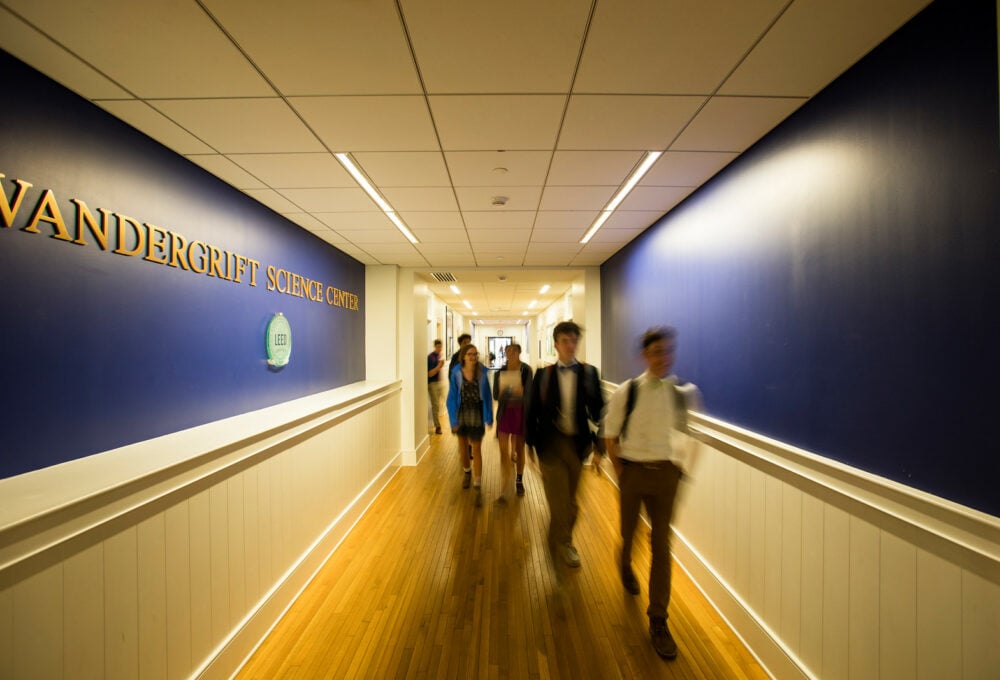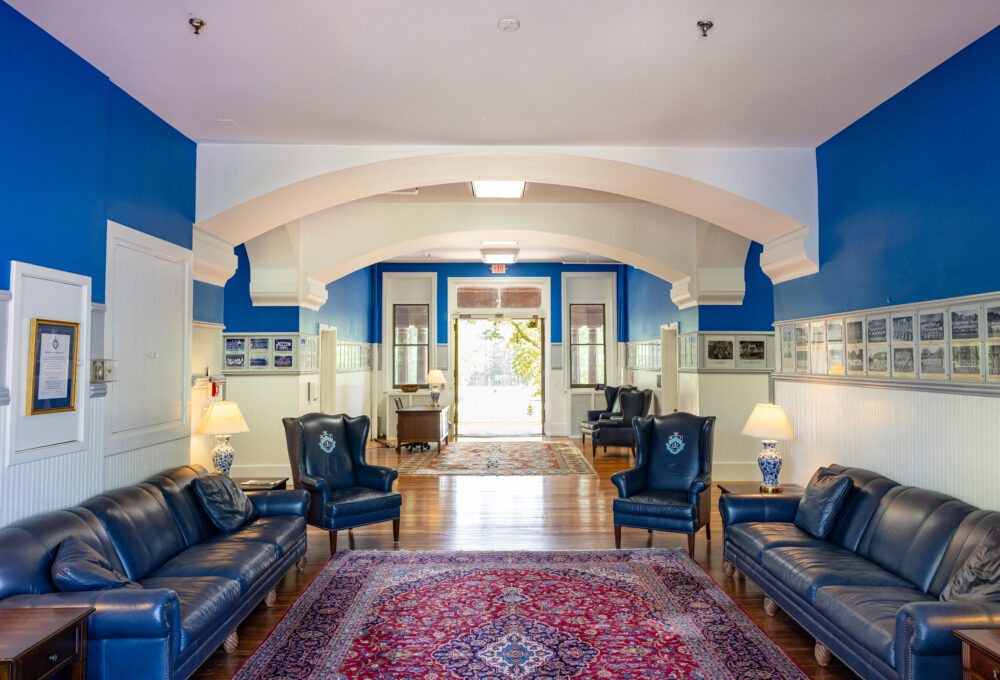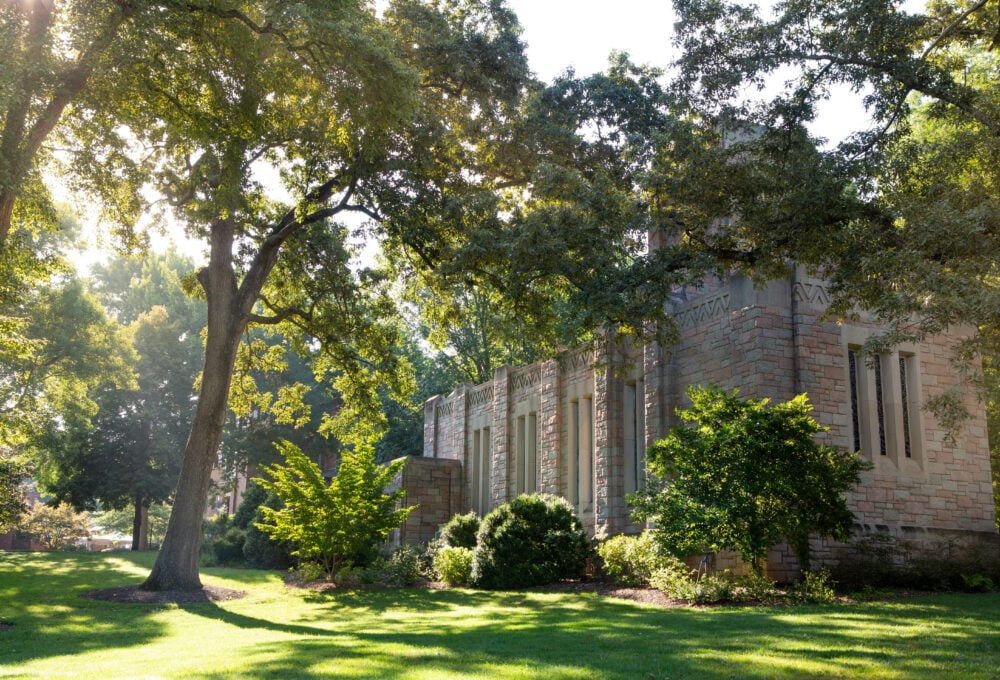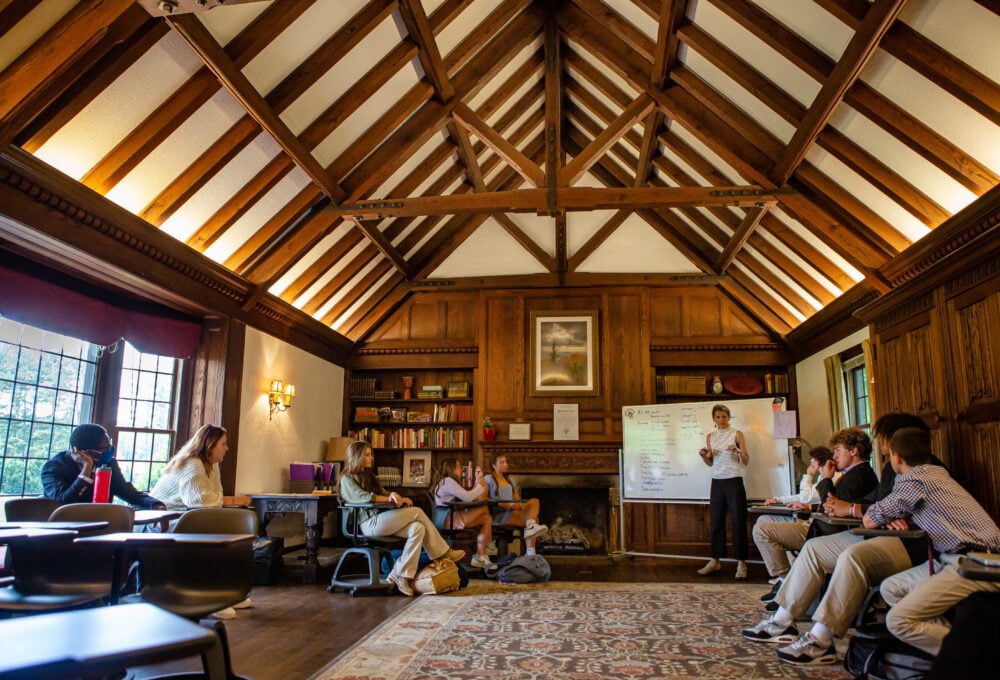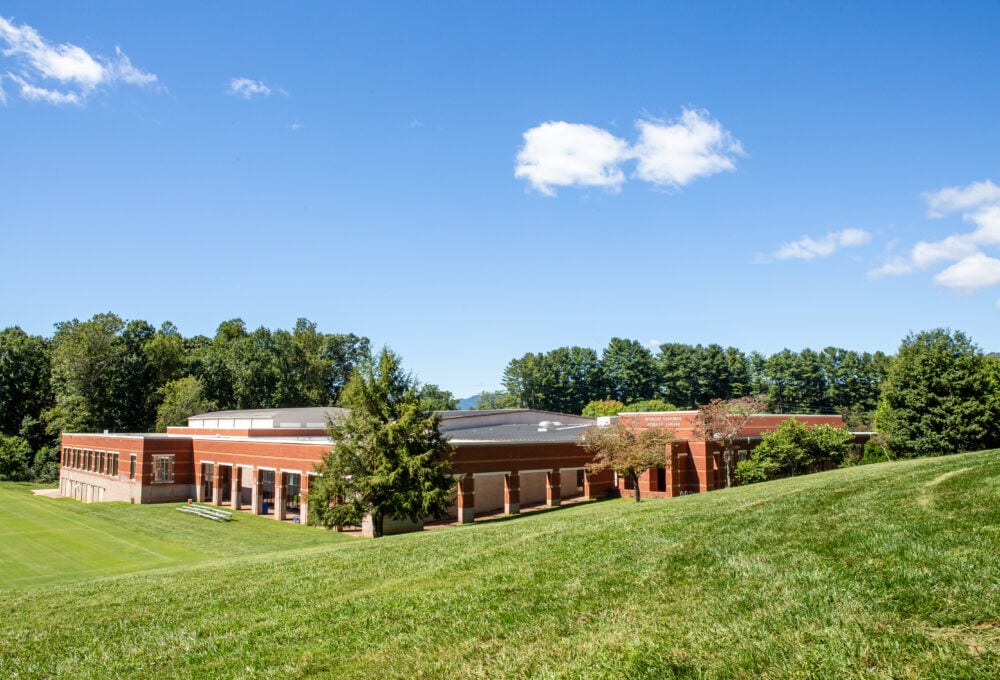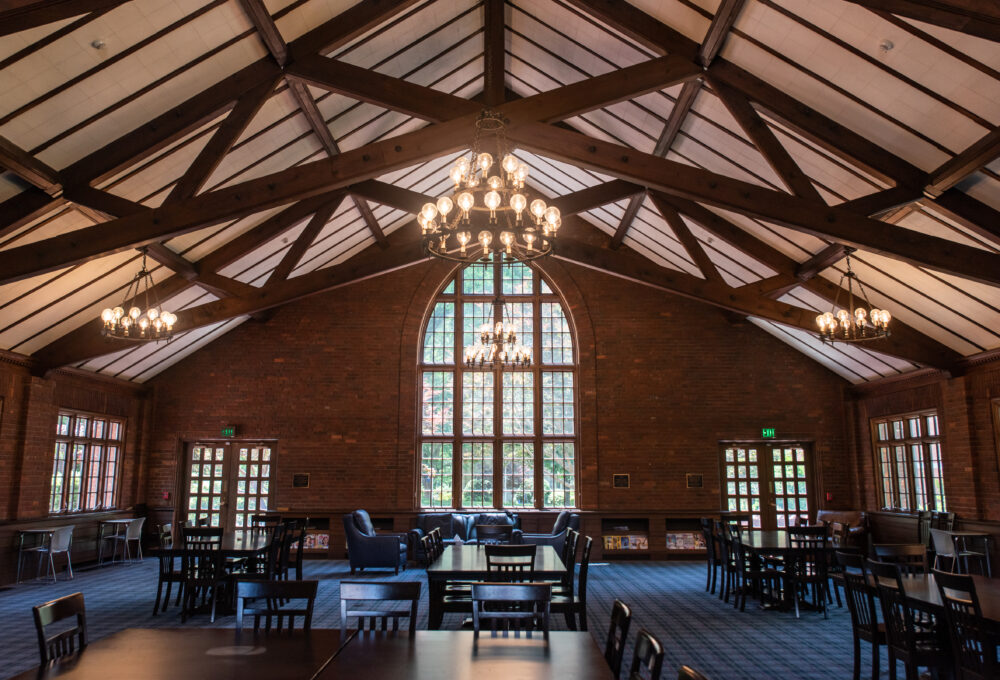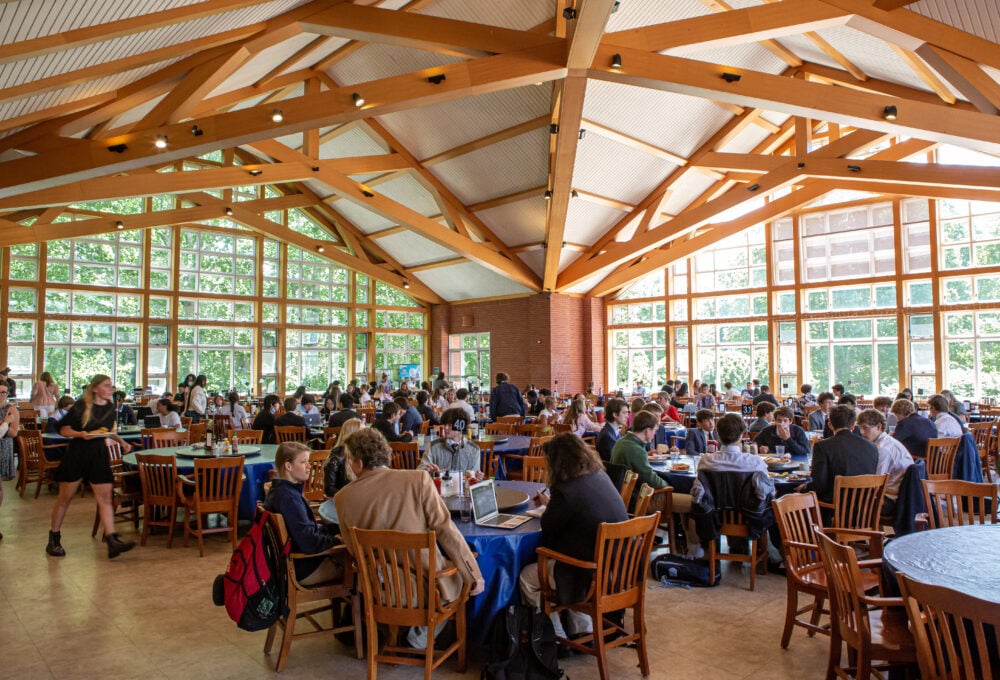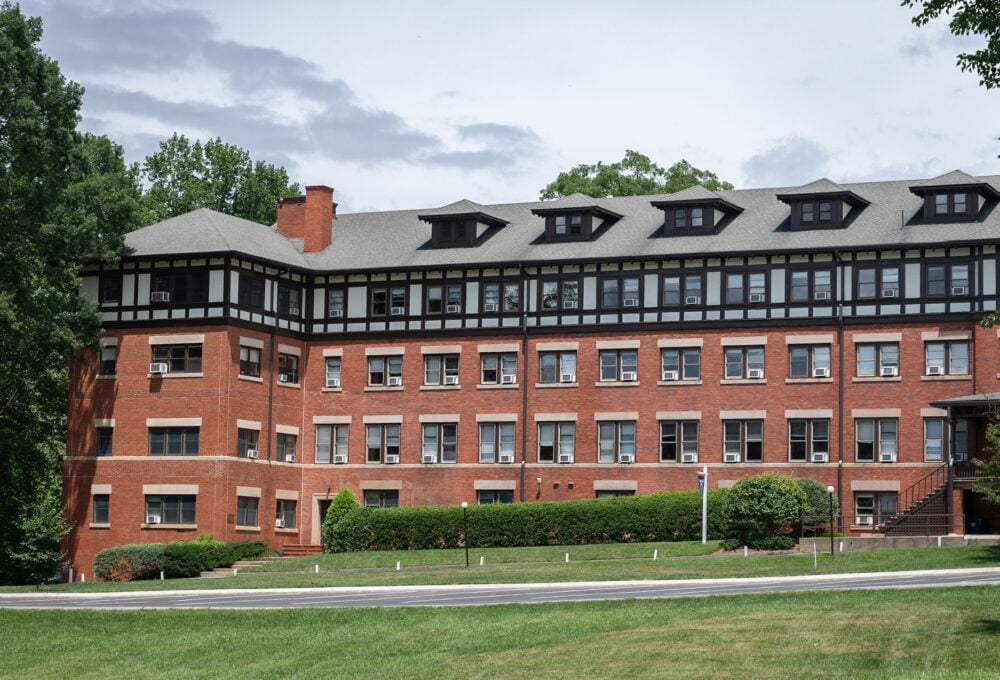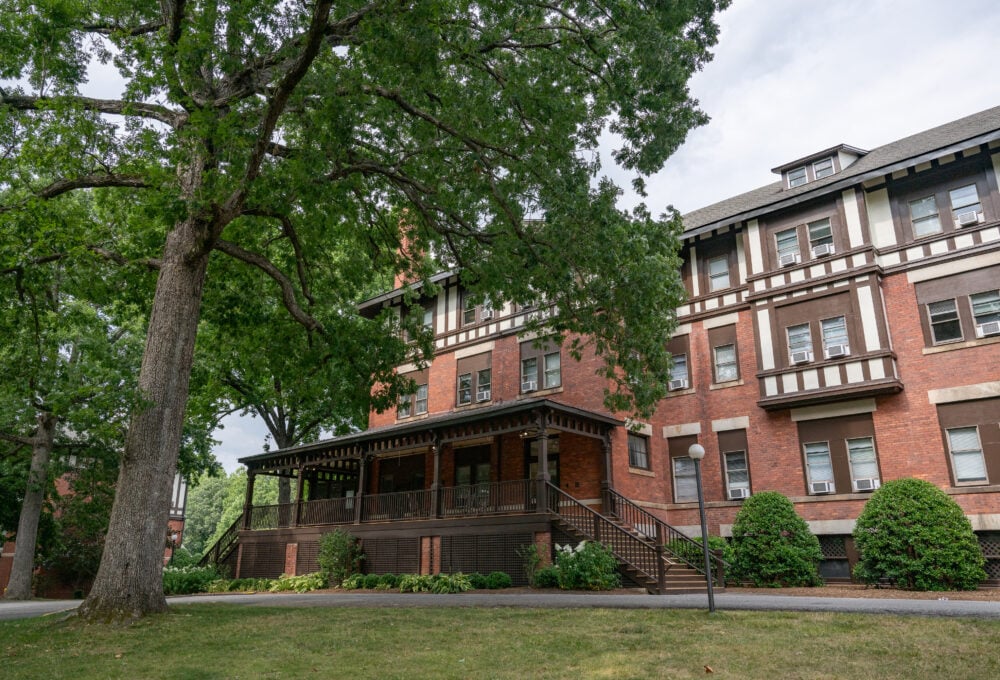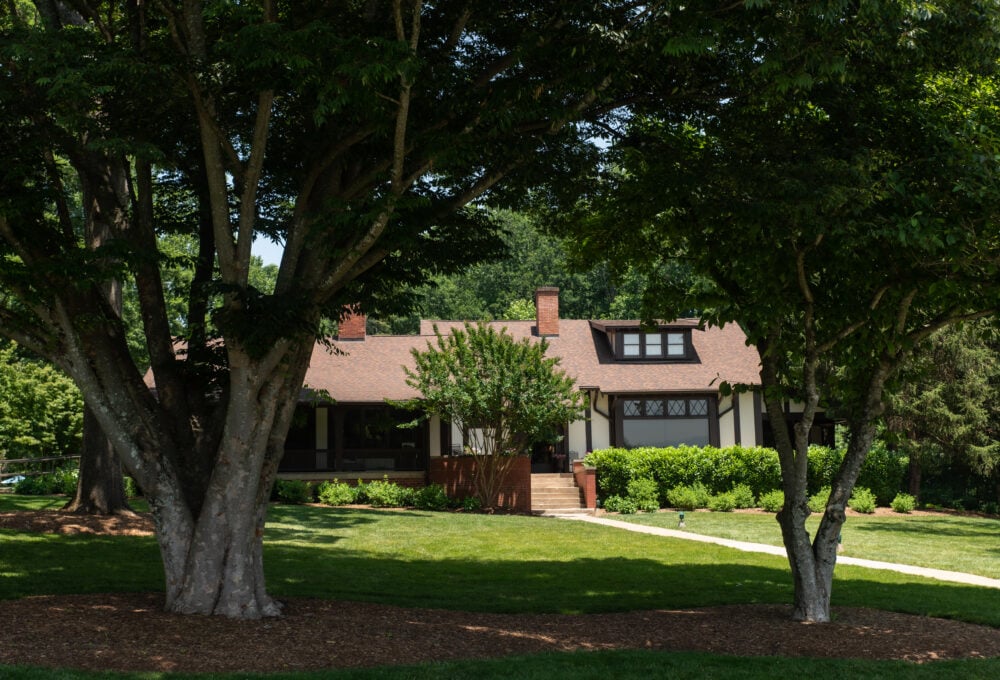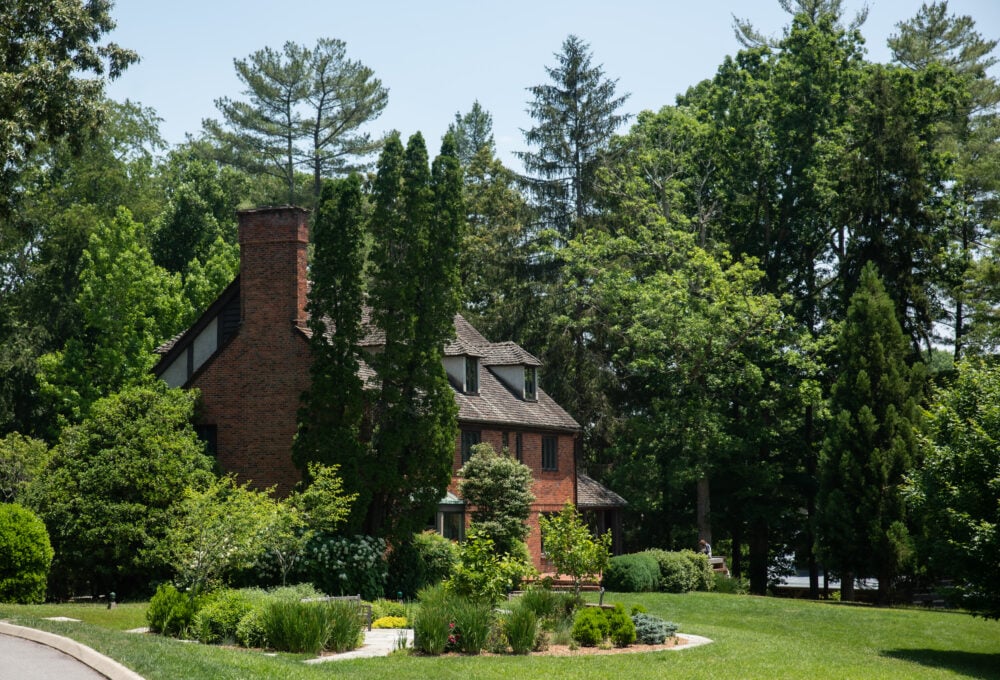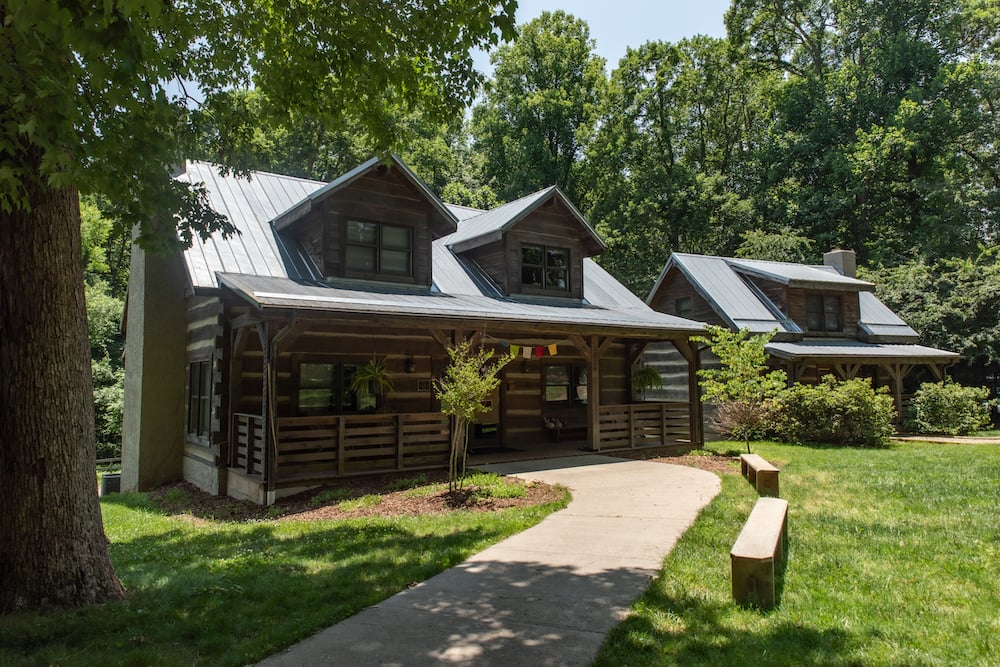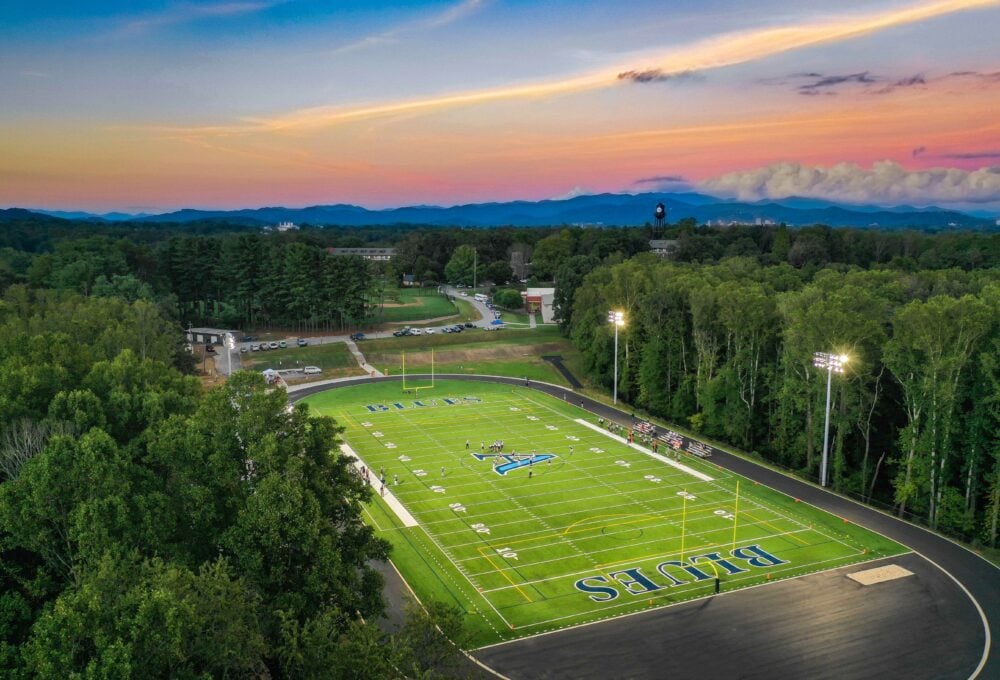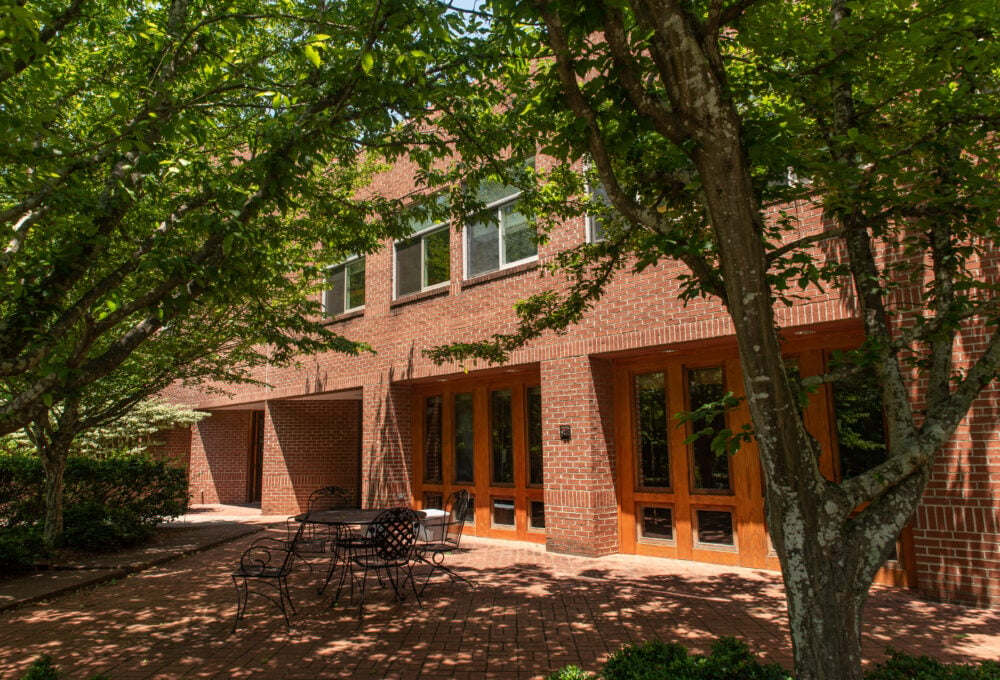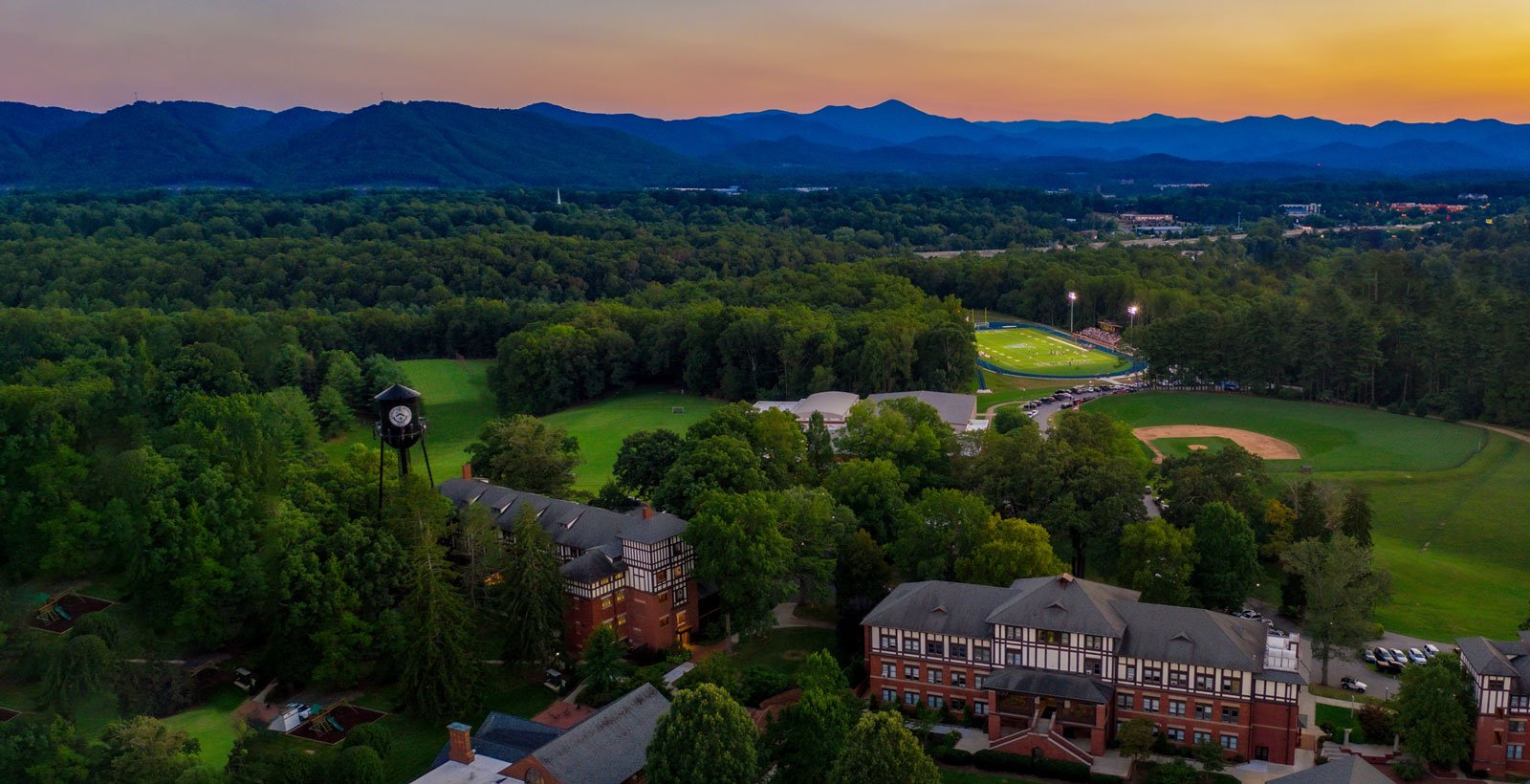
Setting the Scene
Our beautiful home along 300 idyllic acres is a safe haven where students learn and thrive both in and outside of the classroom. Framed by mountains, criss-crossed by walking paths, and dotted by pines, it is a place where we feel inspired, connected, and welcome. This special stamp of soil is more than a picturesque learning environment; it defines our experience.
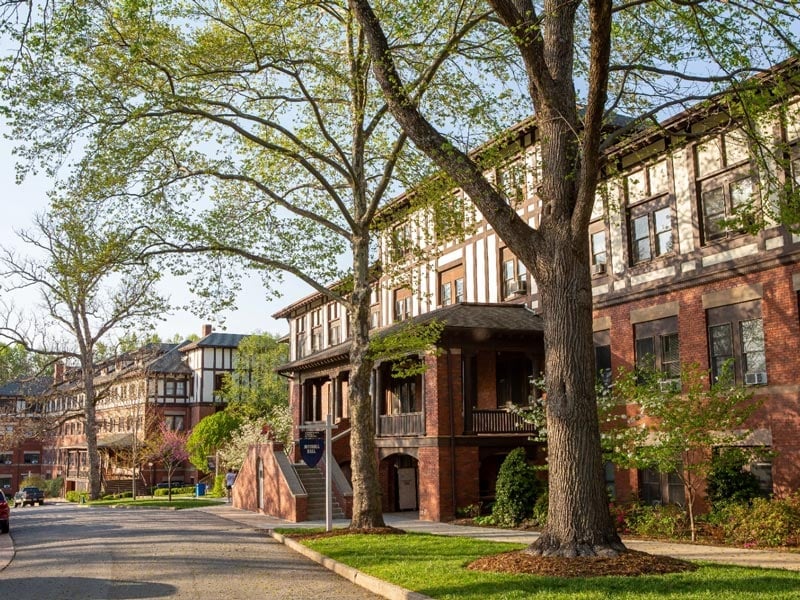
Across our rolling campus are historic academic halls, studios and stages where art is made, and athletic arenas where our Blues compete for victory. Spaces for congregating and spaces for quiet introspection. Some of our buildings date to our institution’s earliest days, while others are products of our continuous growth. All are essential as students prepare to meet their greatest potential.
Mitchell Hall is home to the Vadergrift Science Center, named for James B. Vadergrift (’60). Its newly renovated classrooms and labs are highly adaptable, creating an intimate setting that promotes hands-on learning.
Built in 1903, 2nd Mitchell honors Asheville School co-founder Charles Anders Mitchell. Each of its classrooms features a long communal table where collaborative discussion unfolds.
The William Spencer Boyd Chapel is the center of spiritual life on campus. Chapel services take place here twice a week, in addition to a regular Sunday gathering, and students are encouraged to retreat to the space for quiet reflection anytime.
Built by John Crawford, class of 1933, the Crawford Music House was partially designed and constructed by Asheville School students themselves. Today, it fosters creative thinking, hosting humanities seminars, American studies and literature courses, faculty mindfulness sessions, and the Song Craft club.
Approximately 75 percent of Asheville School’s student body participates in at least one of our 21 interscholastic sports, and Rodgers Athletic Center serves as the hub of it all. This state-of-the-art space is home to the main athletic gym, an auxiliary gym, a fitness center, an athletic training room, and a six-lane pool.
Once a memorial hall for students who sacrificed their lives during WWII, Skinner Library also served as a dining hall until 1993. In 1997, the building was converted into a library, creating communal study space and housing the college and tech support offices.
Gathering for daily seated meals is a hallmark of the Asheville School experience. This bright room buzzes with conversation as students gather several times daily to drape napkins over laps, pass dishes, and share in conversation with faculty and peers. It is named in honor of Asheville School alumni Hugh Sharp (’29), and his grandson, Willie Sharp (’84).
The common room and bustling front steps are popular student hang-outs of this dorm that houses students in grades 10, 11, and 12, as well as seven faculty members. Dating to 1907, it was built in memory of Percy Lawrence, class of 1906.
Formerly a gymnasium, Walker Arts Center is now used for convocations and student-led arts events throughout the school year, including chorus, musical ensembles, plays, and dance performances.
The first building constructed on campus in 1900, Anderson Hall has witnessed Asheville School’s growth across the last century. The beloved building has served a range of purposes as an academic building and a residence hall. Today, it is an all-boys dorm.
In the heart of campus, the historic Fall House is home to the Head of School and their family—and often plays host to students, faculty, alumni, and other visitors. Built in 1912, the residence underwent an extensive expansion in 1919.
While serving as Head of School from 1927 to 1936, Howard Bement made tremendous contributions to our community. Upon his death in 1936, two structures were built in his honor: Crawford Music House and Bement House.
Several decades ago, Pop Hollinsworth established Asheville School’s mountaineering program to connect students not only to nature, but each other. A donation of Bill Paulsen, this lodge acts as a campus hub for the program.
Thanks to the generosity of Flint McNaughton (’82), McNaughton Stadium was completed in 2019, and features an all-weather turf field and track, and stadium seating for 500. Our varsity football team takes the field here on Friday nights, and it hosts varsity track and field, lacrosse, field hockey, and soccer games throughout the week.
The newest dorm on campus, Kehaya House was made possible by the generosity of the Kehaya family. The residence hall is home to 48 female students, who delight in the community feel of the beloved space—and the constant activity on Kehaya Lawn.
